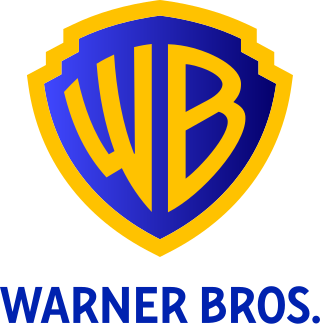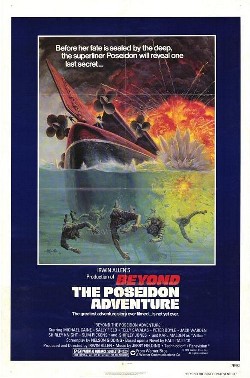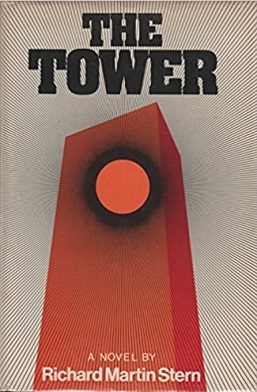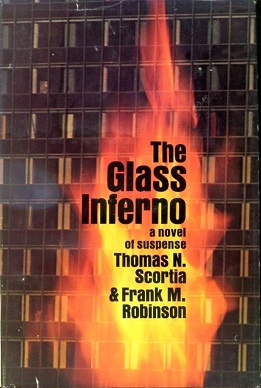
Warner Bros. Entertainment Inc. is an American film and entertainment studio headquartered at the Warner Bros. Studios complex in Burbank, California, and a subsidiary of Warner Bros. Discovery (WBD). Founded in 1923 by four brothers, Harry, Albert, Sam, and Jack Warner, the company established itself as a leader in the American film industry before diversifying into animation, television, and video games, and is one of the "Big Five" major American film studios, as well as a member of the Motion Picture Association (MPA).

A disaster film or disaster movie is a film genre that has an impending or ongoing disaster as its subject and primary plot device. Such disasters may include natural disasters, accidents, military/terrorist attacks or global catastrophes such as a pandemic. A subgenre of action films, these films usually feature some degree of build-up, the disaster itself, and sometimes the aftermath, usually from the point of view of specific individual characters or their families or portraying the survival tactics of different people.

Earthquake is a 1974 American ensemble disaster drama film directed and produced by Mark Robson and starring Charlton Heston and Ava Gardner. The plot concerns the struggle for survival after a catastrophic earthquake destroys most of the city of Los Angeles, California.

Susan Blakely is an American actress. She is best known for her leading role in the 1976 ABC miniseries Rich Man, Poor Man, for which she received a Golden Globe Award for Best Actress – Television Series Drama and an Emmy nomination for Best Actress. Blakely also has appeared in films including The Towering Inferno (1974), Report to the Commissioner (1975), Capone (1975), The Concorde ... Airport '79 (1979) and Over the Top (1987).
Irwin Allen was an American film and television producer and director, known for his work in science fiction, then later as the "Master of Disaster" for his work in the disaster film genre. His most successful productions were The Poseidon Adventure (1972) and The Towering Inferno (1974). He also created and produced the popular 1960s science-fiction television series Voyage to the Bottom of the Sea, Lost in Space, The Time Tunnel, and Land of the Giants.

The Swarm is a 1978 American natural horror film directed and produced by Irwin Allen and based on Arthur Herzog's 1974 novel. It stars an ensemble cast, including Michael Caine, Katharine Ross, Richard Widmark, Richard Chamberlain, Olivia de Havilland, Ben Johnson, Lee Grant, José Ferrer, Patty Duke, Slim Pickens, Bradford Dillman, Henry Fonda and Fred MacMurray in his final film role. It follows a scientist and a military task force who try to prevent a large swarm of killer bees from invading Texas. The film received overwhelmingly negative reviews from critics and was a box-office bomb, although praise was given to the costume design. It has been considered to be one of the worst films ever made.

Joseph Carl Firrantello, known as Joe Farrell, was an American jazz multi-instrumentalist who primarily performed as a saxophonist and flutist. He is best known for a series of albums under his own name on the CTI record label and for playing in the initial incarnation of Chick Corea's Return to Forever.

Beyond the Poseidon Adventure is a 1979 American disaster film and a sequel to The Poseidon Adventure (1972) directed by Irwin Allen and starring Michael Caine and Sally Field. It was a critical and commercial failure, and was the only Allen disaster film to receive no Academy Award nominations. Its box office receipts were only 20% of its estimated $10 million budget.

Mars Attacks! is a 1996 American black comedy science fiction film directed by Tim Burton, who also co-produced it with Larry J. Franco. The screenplay by Jonathan Gems was based on the Topps trading card series of the same name. The film features an ensemble cast consisting of Jack Nicholson, Glenn Close, Annette Bening, Pierce Brosnan, Danny DeVito, Martin Short, Sarah Jessica Parker, Michael J. Fox, Pam Grier, Rod Steiger, Tom Jones, Lukas Haas, Natalie Portman, Jim Brown, Lisa Marie, and Sylvia Sidney in her final film role.
Frederick James Koenekamp, A.S.C. was an American cinematographer. He was the son of cinematographer Hans F. Koenekamp.

When Time Ran Out... is a 1980 American disaster film directed by James Goldstone and starring Paul Newman, Jacqueline Bisset and William Holden. The supporting cast features James Franciscus, Ernest Borgnine, Red Buttons, Burgess Meredith, Valentina Cortese, Veronica Hamel, Pat Morita, Edward Albert and Barbara Carrera.

The San Francisco Fire Department (SFFD) provides firefighting, hazardous materials response services, technical rescue services and emergency medical response services to the City and County of San Francisco, California.

The Tower is a 1973 novel by Richard Martin Stern. It is one of the two books drawn upon for the screenplay Stirling Silliphant wrote for the 1974 movie The Towering Inferno, the other being the 1974 novel The Glass Inferno by Thomas N. Scortia and Frank M. Robinson.

The Glass Inferno is a 1974 novel by American writer Thomas N. Scortia and Frank M. Robinson. It is one of the two books that was used to create the movie The Towering Inferno, the other being the 1973 novel The Tower by Richard Martin Stern.

Towering Inferno is an Atari 2600 game designed by Jeff Corsiglia and programmed by Paul Allen Newell and released by US Games in 1982. The player controls a fireman going through a burning skyscraper to save victims and put out the fires. The game was produced under a licence obtained from 20th Century Fox by Quaker Oats, the parent company of US Games, for the video game rights to the movie of the same name.
The Razzie Award for Worst Remake, Rip-off or Sequel is an award presented at the annual Golden Raspberry Awards for the worst film adapted from some form of previous material. The category covers films that are prequels, sequels, remakes, reboots, spin-offs, film adaptations of other media franchises, mockbusters and "rip-offs".
Alan Scott Newman was an American film and television actor and stuntman whose most prominent roles were in The Towering Inferno and Breakheart Pass. He was the only son and the eldest child of actor Paul Newman. After Scott Newman's death from a drug overdose in 1978, his father established the Scott Newman Center, which is dedicated to preventing drug abuse through education.

Scooby-Doo! and WWE: Curse of the Speed Demon is a 2016 direct-to-DVD animated comedy mystery racing film, a sequel to Scooby-Doo! WrestleMania Mystery and the twenty-seventh entry in the direct-to-video series of Scooby-Doo films. It is a co-production between Warner Bros. Animation and WWE Studios. It premiered at the San Diego Comic-Con on July 23, 2016, followed by a digital release on July 26, 2016. It was released on DVD on August 8, 2016, in the United Kingdom. The film was also released on both DVD and Blu-Ray on August 9, 2016, in the United States by Warner Home Video.

Skyscraper is a 2018 American action thriller film written and directed by Rawson Marshall Thurber. Produced by Legendary Pictures, Seven Bucks Productions and Flynn Picture Company, the film stars Dwayne Johnson in the lead role, with Neve Campbell, Chin Han, Roland Møller, Noah Taylor, Byron Mann, Pablo Schreiber, and Hannah Quinlivan in supporting roles. In the film, Will Sawyer, a former FBI agent, must rescue his family from a newly built Hong Kong skyscraper, the tallest in the world, after terrorists set the building on fire in an attempt to extort the property developer. The first non-comedy of Thurber's career, it also marks his second collaboration with Johnson, following Central Intelligence (2016).

Steve McQueen was an American actor who had an extensive career in film and television. Popularly known as the "King of Cool", McQueen's screen persona was that of portraying cool, reticent antihero roles, which appealed strongly to the masses. This led him to cement his status as one of the most famous celebrities in Hollywood during the counterculture of the 1960s.















